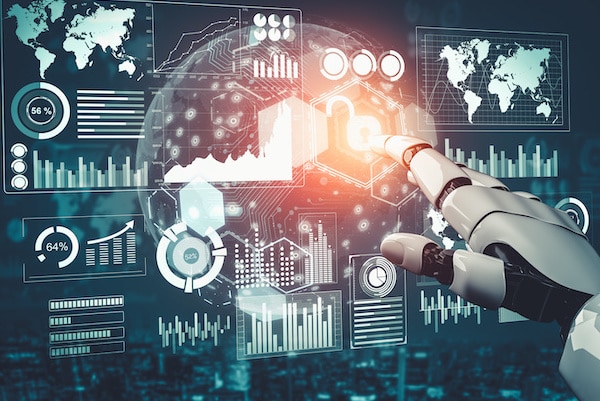Published on: 17/July/2022
Cybersecurity is a process of protecting systems, data, networks and programs from digital threats or cyber-attacks. Cybersecurity is very much needed, especially for a company’s business to be more competitive.
Companies that implement cybersecurity have the advantage of maintaining the company reputation and being more confident in attracting consumers. If customer data is leaked, of course, the company will lose the trust of consumers again. That’s why every company needs their own security management.
Here are the biggest challenges that cybersecurity will face. As for some of the problems below, if handled properly, they will help business owners in minimizing cyberattacks.
Cybersecurity Challenges
1. Unauthorized Abuse of 5G Network by Third Parties
The 5G network is a fifth-generation cellular network that has advantages in internet speed compared to the previous (4G) network. The users of this network are quite a lot because this network can help their work become more efficient. Since everything will become connected, you’ll need VPN for Chrome or other browsers you use. The reason is simple; you always need protection. VPNs will do the job for you.
However, a problem arose where cybercriminals, as third parties, will illegally enter the 5G wireless network through various points and misuse the data stored on mobile phones.
The 5G network has vulnerabilities and cannot be separated from cybersecurity threats. If there is a data leak on the 5G network, a number of sensitive data such as telephones, chats, and others can be taken by irresponsible people.
Therefore, companies are advised to be able to better sort out data that, if it is not important, then sort it through the system. So that all data can be stored properly and the threat of cyberattacks can be reduced.
2. Mobile Malware Upgrade Rate
Malware is malicious software that is intentionally used to cause damage to computers, systems and networks. Malware can harm users through viruses, spyware and so on.
Mobile-only malware is designed to attack a wide variety of smartphone and tablet features. Especially in the current pandemic era, where communication and data systems can be accessed by cellular (as long as they are connected to the internet). Mobile malware can steal that data and can affect the company where the user works.
3. Artificial Intelligence (AI), One of the Cyber Security Control System
Artificial intelligence (AI) can help minimize cyberattacks. AI can detect threats and find their correlation with potential risks quickly. In addition, when requiring users to register by inputting personal data, AI is the right choice as a backend security layer.
4. Rising Popularity of IoT Devices
The use of Internet-of-Things devices is becoming a trend nowadays. However, with its increasing popularity, so does cybercrime. Hackers will not hesitate to destroy internet traffic. If IoT manufacturers fail to secure their devices, consumers will start to hesitate to buy their products due to fear and lack of system protection (cybersecurity).
5. Ransomware Targets Businesses
Ransomware consists of two words, namely Ransome (ransom) and malware, where this type of device is designed to block user access to computers or data until a ransom is paid.
Ransomware attacks will directly or indirectly target small and medium businesses.
Where the perpetrators will send malware or other viruses to smartphones or cellular networks that are currently used, the virus will infect both mobile phones and computers that are connected to the same cellular network.
Then, all personal data or information will be accessed by the perpetrator. They will threaten and demand ransom from users later.
6. Phishing and Spear-Phishing Attacks
Phishing is a theft technique aimed at obtaining personal information data with the aim of draining the victim’s property. The information obtained can be through social media, email, telephone and others.
Spear-phishing is a subsection of phishing and is a more sophisticated version where fraudsters send malicious emails to victims. After that, the victims were well analyzed by the perpetrators based on mental and emotional strength.
7. The Rise of Hacktivism
Hacktivism is a blend of hackers and activists. In general, Hacktivism aims to break into someone’s computer and steal information such as political or social agendas. Their targets are usually government websites.
They will break the security protocol and announce the intent of the hack. However, it doesn’t matter what the hackers’ intentions are. This kind of criminal attack is a slap in the face to government organizations on the importance of protecting customer (society) assets.

